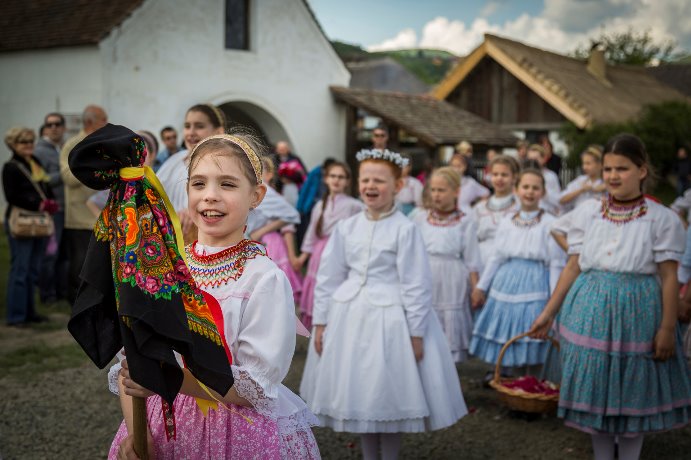Hungarian Pentecost folk traditions

With Whitsun just around the corner, many of us are ready to relax for a while. Whitsun is celebrated in many different forms around the world. Hungarian traditions in particular are worth taking a closer look at. Follow this article to find out more!
What is Hungarian Whitsun like?

People often say that May is the month of Pentecost (or Whitsun), although it is not a static holiday. It can fall between 10 May and 13 June, depending on the time of Easter. In 2022, it is celebrated on 5-6 June. Pentecost traditions, like Hungarian traditions in general, are a mixture of Christian and ancient pagan elements.
An article by Anyanyelvápolók details further. The fortieth day after Easter is Maundy Thursday, the feast of the Ascension of Jesus, and the fiftieth day is Pentecost (coming from the Greek word pentekoste, meaning fiftieth). This is the day on which the Holy Spirit descended on the apostles. It began to speak in different languages, astonished people who gathered to hear the sermon in their language. As a result, many of them were baptised, and the first Christian communities were formed. This is why Pentecost celebrates the birth of the Church. This time of year, not only Christians, but many Hungarians go on a pilgrimage to Şumuleu Ciuc (Csíksomlyó) in Transylvania. The settlement is well-known for honouring the Whitsun traditions.
Now, let us take a gander at what sort of traditions are still alive in Hungary!
Choosing the Pentecost King

In many Hungarian villages, an annual tradition is to choose the Pentecost King. The young men of the village were tested through competitive games, such as horseback riding and bullfights. Only the most agile of the lads could earn the prestigious title. All lads of the village owed their service to the king. He was to be invited to all feasts and gatherings for upwards of a year. Skanzen.hu details further.
There are records which show us that the tradition sprang up around the Middle Ages. The Hungarian saying “Rövid, mint a pünkösdi királyság” (“As short as the kingdom of Whitsun”) was also used. It refers to the transient nature of the festivity.
March of the Pentecost Queen

During this celebration, young girls of the village were in the spotlight. In Transdanubian areas, the folk celebrations went something like the following: five girls would march around the village, door-to-door, singing joyfully. The youngest and most beautiful girl was led by four others: she was the Pentecost Queen. Carrying a basket of flowers, the Queen wore a white dress and a flower crown on the top of her head. A red shawl or veil was to cover the little girl’s head. The group would then sing a fertility charm and dance around the queen, lifting her in the end.
While the original purpose of fertility magic lost its meaning through time, the tradition is still alive. Nowadays, girls perform their act as festive greetings or to request donations.
Hungarian “Zöldágazás”

In Hungarian folklore, this custom was the symbol of the renewal of nature. People would adorn the village in green branches. This was to dispel winter and call for summer. It was also used as fertility magic, and to ward off evil spells.
The festival is also associated with children’s games of song and dance. In the game “Bújj, bújj zöld ág” (“Hide, hide, green branch…”), children form a gate with their arms raised, under which others pass. Little children would walk all around the village, performing this gatekeeping game.
The following is a translation of the above-mentioned folk song by Mama Lisa’s World:
| Hungarian version | English translation |
| Bújj, bújj, zöld ág, zöld levelecske, nyitva van az aranykapu, csak bújjatok rajta. Rajta, rajta, leszakadt a pajta, leszakadt a pajta, benn maradt a macska. |
Slip through, slip through, green twig, Little green leaf, The golden gate is open, So slip through it. Through it, through it, The barn has fallen in, The barn has fallen in, The cat has gotten stuck. |
Source: anyanyelvapolok.hu, skanzen.hu, mamalisa.com


